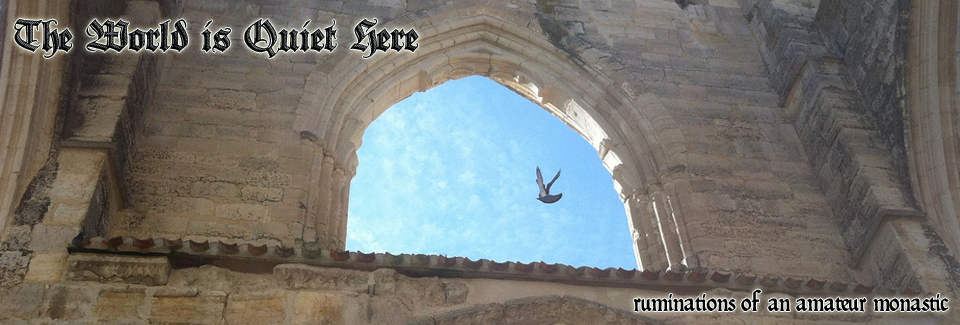Mediatrix of All Graces
 In the calendar used in the Extraordinary Form of the Roman Rite, today is the feast of Mary, Mediatrix of All Graces. Here’s where many folks go off the rails in castigating the Church as non-Christian.
Mediatrix of All Graces? Isn’t Christ our mediator? Does not the scripture say For there is one God. There is also one mediator between God and the human race, Christ Jesus, himself human, who gave himself as ransom for all? (1 Timothy 2:5-6)
In the calendar used in the Extraordinary Form of the Roman Rite, today is the feast of Mary, Mediatrix of All Graces. Here’s where many folks go off the rails in castigating the Church as non-Christian.
Mediatrix of All Graces? Isn’t Christ our mediator? Does not the scripture say For there is one God. There is also one mediator between God and the human race, Christ Jesus, himself human, who gave himself as ransom for all? (1 Timothy 2:5-6)
Well, sure.
And yet, in this as in so many things, we have to go deeper than one citation.
In the Old Testament, the Queen Mother brought the petitions of the people of Israel to her son, the king (1 Kings 2:19). So now Mary brings the petitions of the people of God to her son, Christ the King.
And then you have to look at the Gospels, where the angel greets Mary by the title “Full of Grace” (Luke 1:28), where Mary herself consents to bear the Saviour (Luke 1:38), where His public ministry is begun at her urging (John 2:1-11), and finally where from the cross Jesus gives Mary as a spiritual mother to us all, “behold your mother” (John 19:26).
Throughout Christian history, there has been a clear continuity of belief in Mary as Mediatrix.
2nd century, St. Justin Martyr: “(Christ) became man through the Virgin that the disobedience caused by the serpent might be destroyed in the same way in which it had originated.”
4th century, St. Ambrose: “Eve is called mother of the human race, but Mary Mother of salvation.”
4th century, St. Ephrem the Syrian: “With the Mediator, you are the Mediatrix of the entire world.”
5th Century, Council of Ephesus: “Hail you who acceptably intercede as a Mediatrix for mankind.”
8th Century, St. Germanus: “None is ever granted any gift, except through thee, O most chaste; no grace of mercy is ever shown to anyone, but through thee, O most worthy of all veneration.”
13th Century, St. Albert the Great: “The Blessed Virgin is very properly called gate of heaven for every created or uncreated grace that ever came or will ever come into the world came through her.”
15th Century, St. Bernardine of Siena: “This is the process of divine graces: from God they flow to Christ, from Christ to His mother and from her to the Church.”
Finally in the early 20th century in his Encyclical on the Rosary Octobri Mense, Pope Leo XIII said, “We may affirm that nothing, by the will of God, is given to us without Mary’s mediation, in such way that just as no one can approach the almighty Father but through His Son, likewise no one, so to speak, can approach Christ but through His Mother.”
Speaking only for myself, it was Mary who brought me into the Church. It was on her feast of the Assumption that I walked into a Catholic church for the first time in probably twenty years. I never left.
Even though it was Christ who pursued me and who finally caught me, it was His mother who gently called to me in my darkest hours, drawing me closer to God. I thank her, and I thank God for her, every day.
So today, we celebrate Mary, not as Redeemer, not as Saviour, for those properly belong to her son, but as Mediatrix, as the one who always points us to her son, the Son of God.
I will conclude with my favourite Marian hymn, which was written by the fascinating Benedictine Blessed Hermann of Reichenau in the 11th century.
| SALVE REGINA, mater misericordiae, vita, dulcedo, et spes nostra, salve. Ad te clamamus exsules filii Hevae. Ad te suspiramus, gementes et flentes in hac lacrimarum valle.
Eia, ergo, advocata nostra, illos tuos misericordes oculos ad nos converte. Et Iesum, benedictum fructum ventris tui, nobis post hoc exsilium ostende. O clemens, O pia, O dulcis Virgo Maria. Amen. |
HAIL HOLY QUEEN, Mother of mercy, our life, our sweetness, and our hope. To thee do we cry, poor banished children of Eve. To thee do we send up our sighs, mourning and weeping in this vale of tears.
Turn then, most gracious Advocate, thine eyes of mercy toward us. And after this our exile show unto us the blessed fruit of thy womb, Jesus. O clement, O loving, O sweet Virgin Mary. Amen. |
And for the record, it’s not possible for the Church itself to define non-Christian doctrines, for Christ Himself founded it upon Peter the Rock, and the very gates of Hell shall not prevail against her (Matthew 16:13-19).

